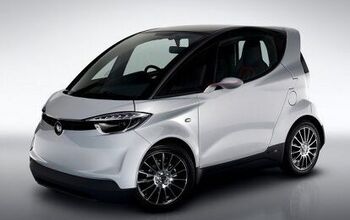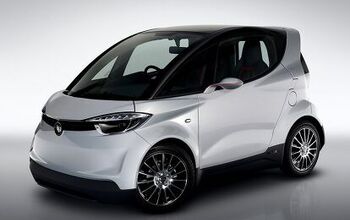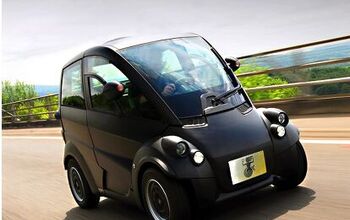The Car, According To Gordon Murray
The New York Times’ Wheels blog recently convinced Gordon Murray to answer a few questions posted by its readers. With the journalists safely out of the way, what followed was a broad, frank and fascinating conversation about the future of the automobile. Sure, there are questions about the past, like how he would update the McLaren F1 vis a vis Veyron and company. Carbon fiber brakes, admits Murray, but he “wouldn’t envisage any other change.” He’d much rather talk about his current project, the T.25 city car. It’s a plastic-bodied attempt at “the next iconic city car, from a styling point of view, as was the 1957 Fiat 500 and the 1959 Mini.” The inevitable question comes: “Why do you want to work on this type of car now, after building the worlds greatest supercar? Murray appears to have been thinking about this thing for a while. “I have built performance cars all my life, and their time, unfortunately, is pretty much over. What we’re working on is a car for the future. It has been a gradual evolution of thought, which started in the summer of 1993 when I was stuck in traffic jam on the way to work.” And he swears it’s for real. “Building an ultra-light but safe and efficient car at a very low cost and sales price requires the exact same lateral thinking and philosophy we applied to the McLaren F1.” And the rule book does seem to have been thrown out. The T.25 has been designed to “to accept any powertrain or fuel,” and Murray claims his firm “can license out our manufacturing process whether we undertake the engineering work for the program or not.” Working with speed freaks (and T.25 investors) Caparo to develop low-cost composites, Murray hopes to kill enough weight and friction to get 80 mpg on a European combined cycle. “The design,” he says, “is small, low-cost and efficient. If this comes close to living up to its potential, it’s going to be a big deal. Given Murray’s history, it’s got as good a shot as any other modular, poly-powertrain, lightweight, iconic city car currently in development. Seriously, read the whole thing.
More by Edward Niedermeyer
Latest Car Reviews
Read moreLatest Product Reviews
Read moreRecent Comments
- Bd2 Ultimately, it comes down to price/whether it makes financial sense for buyers (right now, BEVs just aren't there, even with the tax credit). HEVs are finally seeing their place in the sun, decades after being a niche market; this is due to premium for HEVs having narrowed significantly with pure ICE, whereby buyers can recoup that after 2-3 years of ownership.
- MaintenanceCosts I've experienced three cars that were the first year of the model. The two I bought (first-off-the-boat 2004 TSX and midyear 2006 Civic) were both Hondas and were both flawless. The other one was my ex-stepmother's 1990 Land Rover Discovery. It was one of the very first Euro-spec models, a two-door with an asthmatic carbureted 3.5L V8 and a five-speed manual. Every part of the car broke at some point, including things like hatch hinges that really shouldn't break. It turned her off Land Rover forever, and her cars since have all been Subarus.
- MaintenanceCosts When I was living with my Bolt in a rental condo and charging from 120V in the garage, as soon as the association figured out what was happening, they asked me to pay $30 a month to cover the cost. That's pretty close to what I was using so I had no issue with it.
- SCE to AUX I've had mixed results with first-year cars:71 Pinto - good. 85 LeBron GTS - good. 96 Grand Voyager - good. 02 Passat B5.5 - bad. 05 Odyssey - bad. I also had a last-year car that was terrible (80 Bobcat), but most cars were crap then, anyway.
- Crown Go big or go home. Never understood the "economy version" that manufacturers make of a performance car.


































Comments
Join the conversation
I absolutely love dirt-cheap economy cars. Such is why whenever I try to imagine what my imaginary car company would build and market to the public (don't judge my imaginings; you've all done it), it's always low-end and unique. I await the T.25 with baited breath.
Gordon Murray has always had the right ideas conceptually and is well respected in the UK